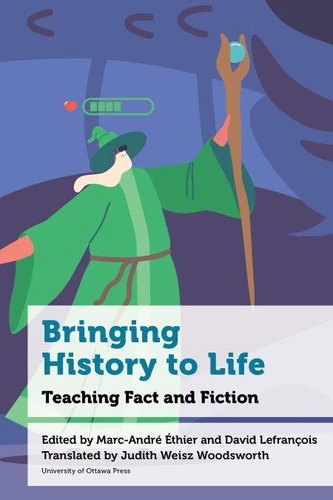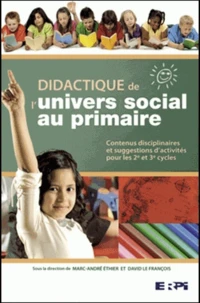Bringing History to Life. Teaching Fact and Fiction
Par : , , , ,Formats :
Disponible dans votre compte client Decitre ou Furet du Nord dès validation de votre commande. Le format ePub est :
- Compatible avec une lecture sur My Vivlio (smartphone, tablette, ordinateur)
- Compatible avec une lecture sur liseuses Vivlio
- Pour les liseuses autres que Vivlio, vous devez utiliser le logiciel Adobe Digital Edition. Non compatible avec la lecture sur les liseuses Kindle, Remarkable et Sony
 , qui est-ce ?
, qui est-ce ?Notre partenaire de plateforme de lecture numérique où vous retrouverez l'ensemble de vos ebooks gratuitement
Pour en savoir plus sur nos ebooks, consultez notre aide en ligne ici
- Nombre de pages344
- FormatePub
- ISBN978-0-7766-4146-1
- EAN9780776641461
- Date de parution21/01/2025
- Protection num.pas de protection
- Taille3 Mo
- Infos supplémentairesepub
- ÉditeurUniversity of Ottawa Press
Résumé
History has never been as present in our daily lives as it is today. Through any number of media outlets, tens of millions of people are in daily contact with historical discourses and practices. Between games, informational articles, social media posts and other sources, history is everywhere-in Civilization VI, live-action role-playing games, The Berlin Trilogy, Game of Thrones, and the works of Tolkien or Satrapi.
This rise in popularity of history, along with an unprecedented access to social platforms, provide opposing and irreconcilable views of what should be commemorated (or debunked), of decolonization and reconciliation, and of other historical and social justice questions such as the elimination of police brutality and racism. How can we help our youth develop the critical thinking they need to address these questions?Reflecting on the use of works of non-academic history in the classroom, the authors of this book explore the use of popular or public history to teach historical thinking that will enable students to become informed and engaged citizens.
This rise in popularity of history, along with an unprecedented access to social platforms, provide opposing and irreconcilable views of what should be commemorated (or debunked), of decolonization and reconciliation, and of other historical and social justice questions such as the elimination of police brutality and racism. How can we help our youth develop the critical thinking they need to address these questions?Reflecting on the use of works of non-academic history in the classroom, the authors of this book explore the use of popular or public history to teach historical thinking that will enable students to become informed and engaged citizens.
History has never been as present in our daily lives as it is today. Through any number of media outlets, tens of millions of people are in daily contact with historical discourses and practices. Between games, informational articles, social media posts and other sources, history is everywhere-in Civilization VI, live-action role-playing games, The Berlin Trilogy, Game of Thrones, and the works of Tolkien or Satrapi.
This rise in popularity of history, along with an unprecedented access to social platforms, provide opposing and irreconcilable views of what should be commemorated (or debunked), of decolonization and reconciliation, and of other historical and social justice questions such as the elimination of police brutality and racism. How can we help our youth develop the critical thinking they need to address these questions?Reflecting on the use of works of non-academic history in the classroom, the authors of this book explore the use of popular or public history to teach historical thinking that will enable students to become informed and engaged citizens.
This rise in popularity of history, along with an unprecedented access to social platforms, provide opposing and irreconcilable views of what should be commemorated (or debunked), of decolonization and reconciliation, and of other historical and social justice questions such as the elimination of police brutality and racism. How can we help our youth develop the critical thinking they need to address these questions?Reflecting on the use of works of non-academic history in the classroom, the authors of this book explore the use of popular or public history to teach historical thinking that will enable students to become informed and engaged citizens.




















